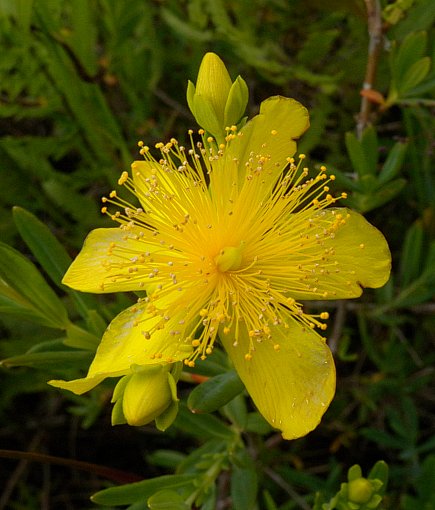
Each flower is about 1–1¼" across, consisting of 5 spreading yellow petals, 5 light green or light yellow sepals, a light yellow pistil with 5 styles (the latter are often united), and numerous conspicuous stamens. The petals are broadly oblong or obovate in shape, while the sepals are lanceolate; the petals are about twice the length of the sepals. The filaments of the stamens are light yellow, while the anthers are medium yellow or golden yellow. The pedicels of the flowers are up to ¾" long, light green, and glabrous. The blooming period occurs from mid-summer to late summer, lasting about 1 month. Afterwards, the flowers are replaced by seed capsules about 8 mm. (1/3") long that are lanceoloid in shape and 5-lobed. The interior of each seed capsule has 5 completely separated cells; there are numerous seeds in each cell. These seeds are dark-colored, narrowly oblongoid, and somewhat flattened. The woody root system is shallow and spreading.
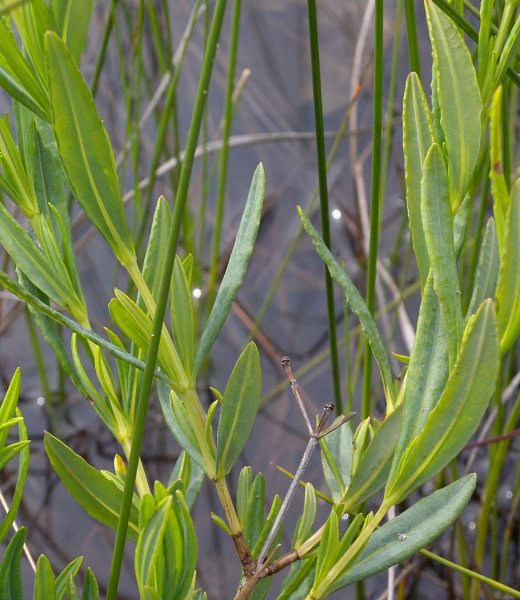
Cultivation: The preference is full sun, wet to moist conditions, and soil containing calcareous sand or limestone. Shallow water is tolerated if it is temporary. This shrub is winter-hardy to Zone 4.
Range & Habitat: Kalm's St. John's Wort occurs in NE Illinois along Lake Michigan, where it is native (see Distribution Map). In Illinois, this shrub is rare and state-listed as 'endangered.' It is endemic to the Great Lakes Region. Habitats include interdunal swales, borders of small sandy ponds, moist to wet sandy meadows, and moist sand flats (pannes). Outside of Illinois, Kalm's St. John's Wort occurs on limestone flats (alvars). This shrub is found in high quality natural areas. It is also cultivated occasionally in gardens because of its showy flowers.
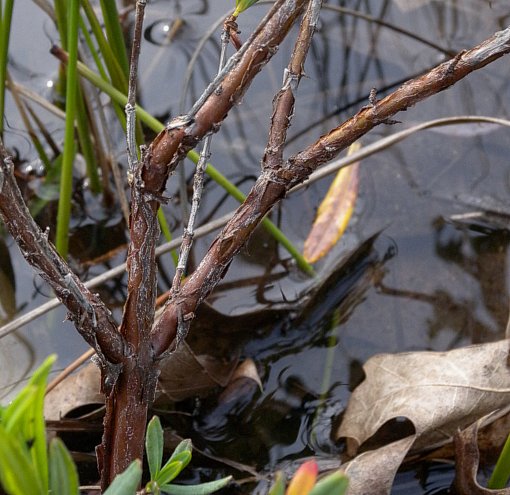
Faunal Associations: Mostly various bees visit the flowers, where they collect pollen. Nectar is not available as a floral reward. Grundel et al. (2011) observed a leaf-cutting bee (Megachile montivaga) and Halictid bees (Augochlorella aurata, Lasioglossum pectorale) visiting the flowers of Kalm's St. John's Wort. Two oligophagous aphids suck the sap of this shrub: Aphis mizzou and Aphis hyperici. The caterpillars of an oligophagous moth, Nedra ramosula (Gray Half-spot), feeds on St. John's Wort species (Hypericum spp.), while the caterpillars of two polyphagous moths, Eupithecia miserulata (Common Pug) and Synchlora aerata (Wavy-lined Emerald), sometimes feed on the flowers (Lagos et al., 2012; Covell, 1984/2005; Wagner, 2005).
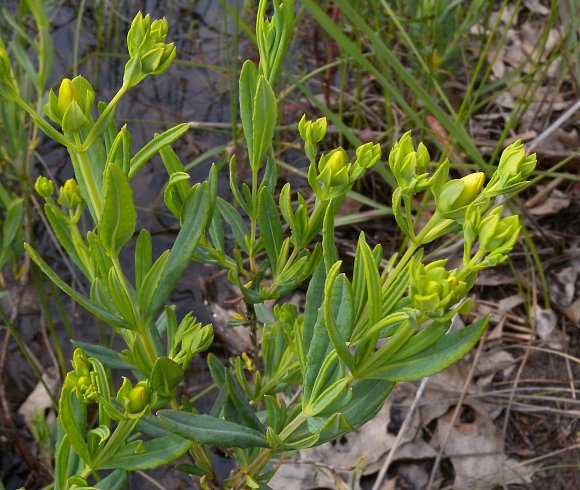
Kalm's St. John's Wort is rarely browsed by White-tail Deer. In places where this animal is abundant, this shrub has a tendency to increase because of selective browsing (Bradstreet & Bowles, 2002). The leaves of St. John's Wort species are somewhat toxic to domesticated farm animals, particularly those with white or thin fur. These plants contain a toxin that increases sensitivity to the ultraviolet radiation of sunlight, causing irritation of the skin. Consumption of these plant species can also irritate the gastrointestinal tract of these animals.
Photographic Location: Border of a small sandy pond and a moist sandy meadow near Lake Michigan in NE Illinois.
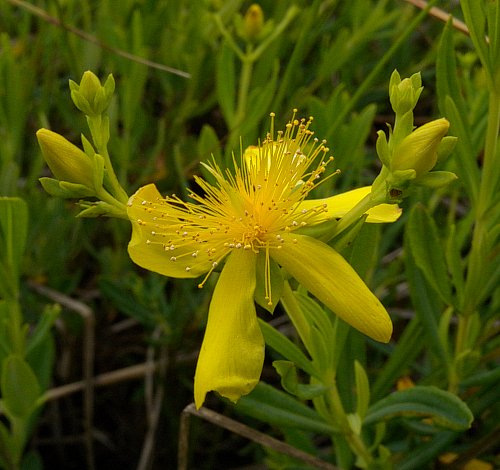
Comments: Populations of this small showy shrub appear to be increasing in some protected areas of Illinois. Kalm's St. John's Wort can be distinguished from most species of St. John's Wort (Hypericum spp.) by its woody lower branches; most species of St. John's Wort in Illinois are entirely herbaceous. Compared to another shrubby species, Shrubby St. John's Wort (Hypericum prolificum), Kalm's St. John's Wort has more narrow leaves (never exceeding 8 mm. across) and it has 5-celled seed capsules, rather than 3-celled seed capsules. It is similar to another shrubby species that is found in southern Illinois, Five-lobed St. John's Wort (Hypericum lobocarpum). This latter species has cymes with a greater number of flowers (usually exceeding 7 flowers each) and its flowers are smaller in size (about ¾" across).